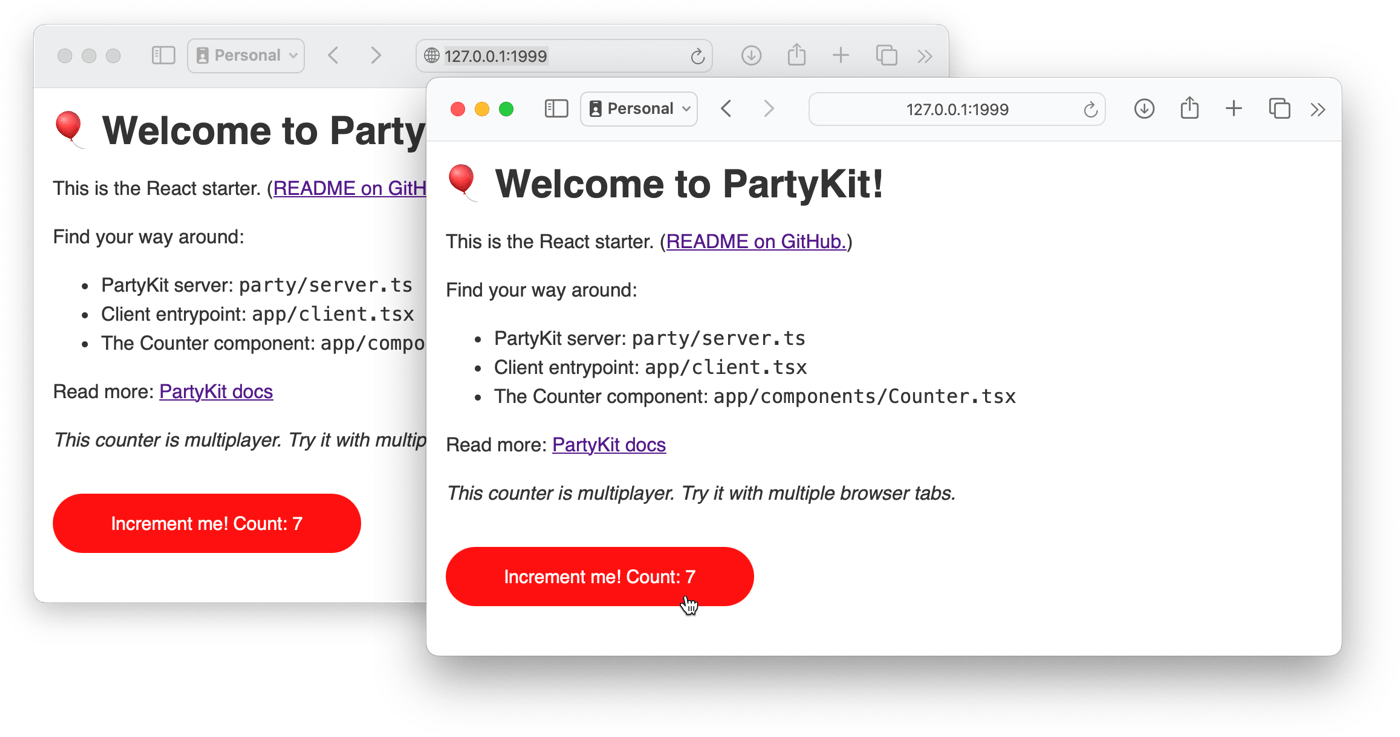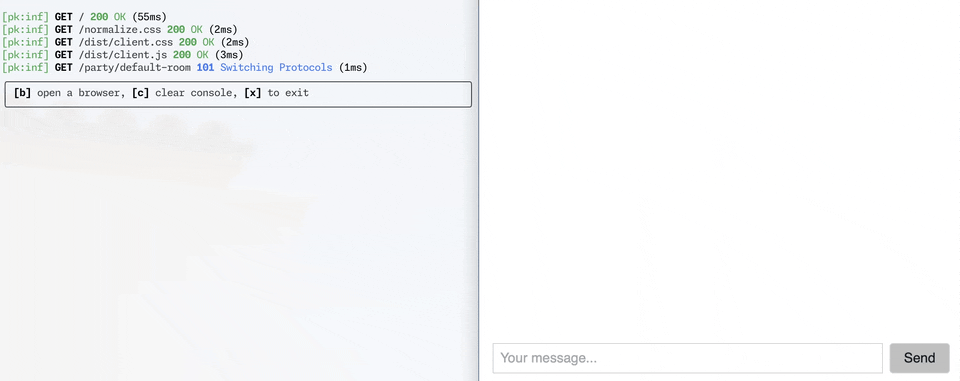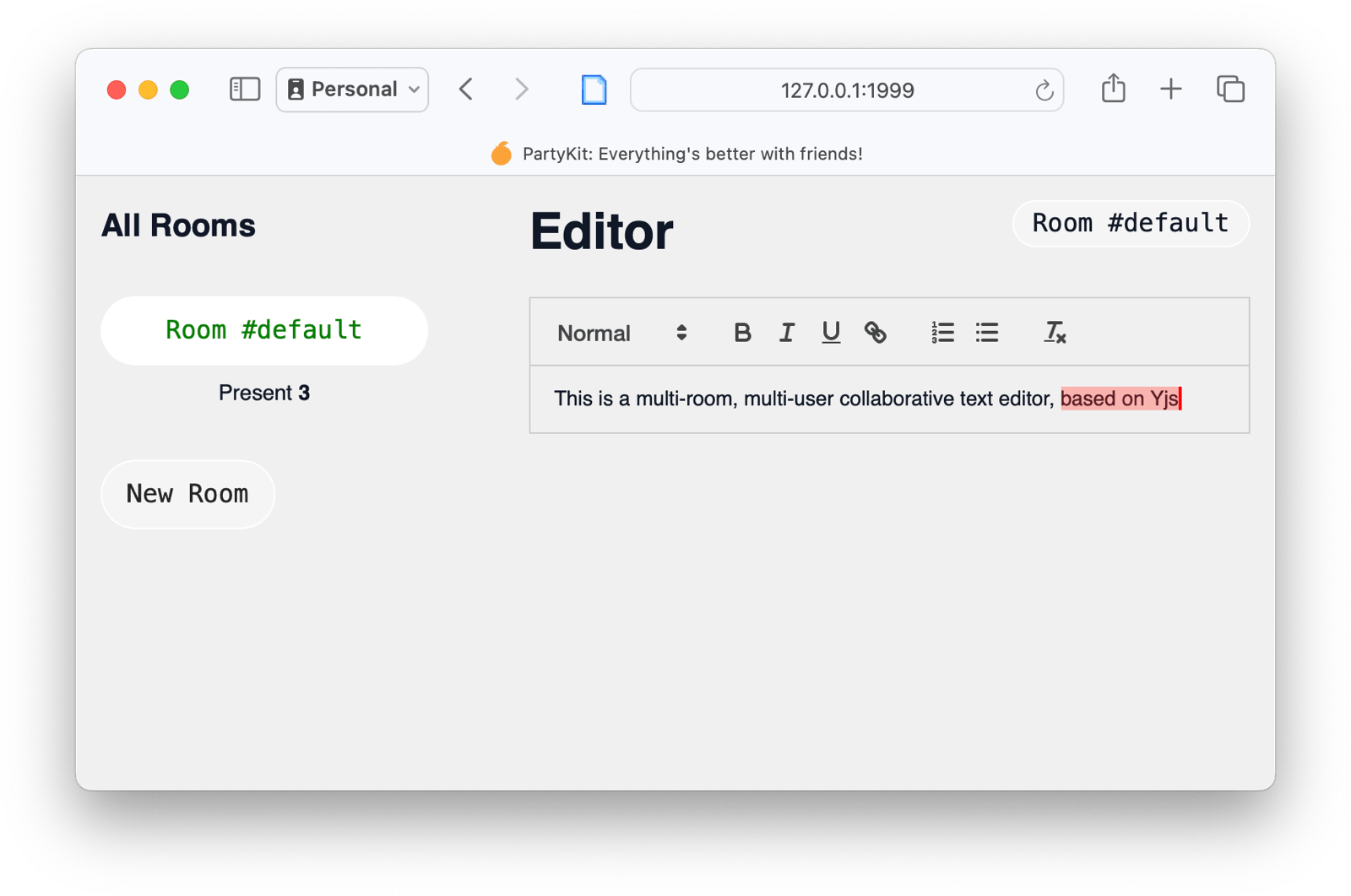We’re on a mission to make it even easier to get started with PartyKit.
Now when you type:
npm create partykit@latest
…you’ll see a number of options:
Which template would you like to use?
❯ TypeScript starter
JavaScript starter
React starter
Chat room starter with AI
Text editor starter using Yjs
Let’s dive into all five!
🗣️ These starters are for new projects
These starters are for new PartyKit projects, and for example code. If you already have a project, see the docs for how to add PartyKit to an existing project.
Minimal starters
TypeScript starter and Javascript starter
Save yourself time doing setup.
Choose one of these two starters for:
- a working PartyKit server
- a client-side app that connects to the server
- the
partykit.jsonconfig file
You can type npm run dev immediately: both starters include example client-server messages, and the client app is built and served using PartyKit so you can work with it during development.
In TypeScript and Javascript flavors.
React starter
As real-time frameworks, PartyKit and React pair well together! So this is a brand new starter that gets you up and running in no time.
Get started with:
npm create partykit@latest my-react-project --template react
When you run the app with npm run dev, you’ll find a traditional ‘Increment Me’ button to demonstrate client state. Only this button is multiplayer.

It’s a great starting point. See the README to get oriented.
Bonus starter: Remix
Remix is a full-stack framework for React with a server-side framework, routing and more. We’ve made a PartyKit starter for Remix, too, which includes hosting the entire Remix application on the PartyKit platform.
It’s a little different than the other templates. To get started, run:
npx create-remix@latest --template partykit/remix-starter
See the remix-starter repo on GitHub for more details.
Full-fat starters
We’re taking this opportunity to show richer uses of PartyKit, demonstrating patterns that are more advanced but widely applicable.
We’re starting with two, both fully documented.
Chat room starter with AI
Select this starter to see:
- Multiplayer chat with AI participants, and how to keep state
- Using PartyKit AI to call large language models like Llama and Mistral right from the PartyKit server
- Also how to call external OpenAI models, with streaming responses.

Bonus feature: the shouldReply function on the server shows how to escalate from a cheaper model that discriminates when to jump in, to a more expensive model that generates the response. It feels more natural than an AI partipant that responses to every message.
PartyKit is a great fit for stateful, real-time AI experiences, so we love digging into real interactions.
You also get this chat room README in the starter.
The README is a detailed breakdown of how to build this AI chat room app. It’s a starting point to learn about PartyKit even if this isn’t the exact code you begin your project with.
Text editor starter using Yjs
This starter shows:
- A collaborative text editor using Yjs for sync
- Yjs on the client and server, implementing using the drop-in Y-PartyKit library
- Multiple rooms with live occupancy counts.

Yjs is a battle-tested and popular sync framework, and PartyKit has first-class support. This starter is your reference implementation if you’re building your own Yjs app.
Additionally, a common pattern for multiplayer apps is to have rooms where users can move from room to room to collaborate with different teams on different data. But how can rooms advertise their real-time presence, or other metadata, into a lobby or other index view? This example demonstrates how, using PartyKit’s multiple party support.
Here’s the text editor README.
Again, the README is a detailed breakdown of how to build this Yjs editor app. Start a project with this template to get the README, and follow along to learn more about PartyKit, and the Yjs and multi-party patterns.
What’s next
It’s the best way to get started with PartyKit:
npm create partykit@latest
We plan to add more starters over time.
We’d love to hear your feedback on these initial starters, and suggestions on what to add next.